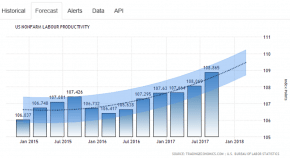The 2017 Word of the Year is multi-task. The continued expansion of technology, robotics and smart devices into the workplace are contributors to continued increases in productivity as reported by the US Bureau of Labor Statistics.

No matter the size of your business, line level employees, managers and executives are continually challenged to do more with less resources and improve productivity and profitability. Often these situations are the result from staff turnover, retirements or reduction in force circumstances. However, innovation and new capabilities or strategies also impact daily work demands. Has the workplace environment becomes reactive, and not pro-active? Priorities are adjusted daily to keep up with office intrusions or new client requirements. In these situations, good managers lose track of common contracts or departmental responsibilities. I have often said, “some organizations move at the speed of error”. Now some errors go unnoticed without incident, others are corrected “just in time”, and others can cause serious issues. Those errors invariably result in an RCA (route cause analysis), perhaps impacting the brand of the organization.
In the area of indirect spend and management of multiple supplier contracts, the controls process is more reactive due to complacency. The big contracts or those with supplier service issues get managed. However, a closer look at supplier contract terms show many agreements auto renew and generally not at favorable terms to the customer. Contracts expire and go month-to-month, and often these contracts are in an SG&A category. Senior managers don’t see the management of these expenses as material to the organization. However, a review of these areas yields impressive savings when contracts are brought to light.
Indirect spend can be as much as 25% of a firm’s total expenditures, and this is an extremely fragmented supply chain. However, when viewed across multiple plants or locations with an eye towards control and leveraging best practices in procurement, these savings move directly to the bottom-line.
Good supplier management practices can mitigate these issues. However, we continually see organizations that don’t manage services to a level of satisfaction, whether they’re adding copy machines to their facilities or buying office supplies. All of these issues can result in compounded lost savings. We often agree to pay for great service and settle for an acceptable or (in some cases) unacceptable level service.
Why? … because we are multi-tasking and the degree of difficulty is too great to pursue the contract to satisfaction.
Today’s organizations are continually challenged to improve all areas of operations. Strategies around indirect expenditures and services, if focused, can yield significant savings and operational improvements. Controls in these areas are a competitive advantage that can sustain the reliability of any organization’s indirect supply chain.
Don’t let these issues fall off the radar, bring the savings home by actively managing your tail spend. Click here to learn more about managing tail spend or contact our experts today.




